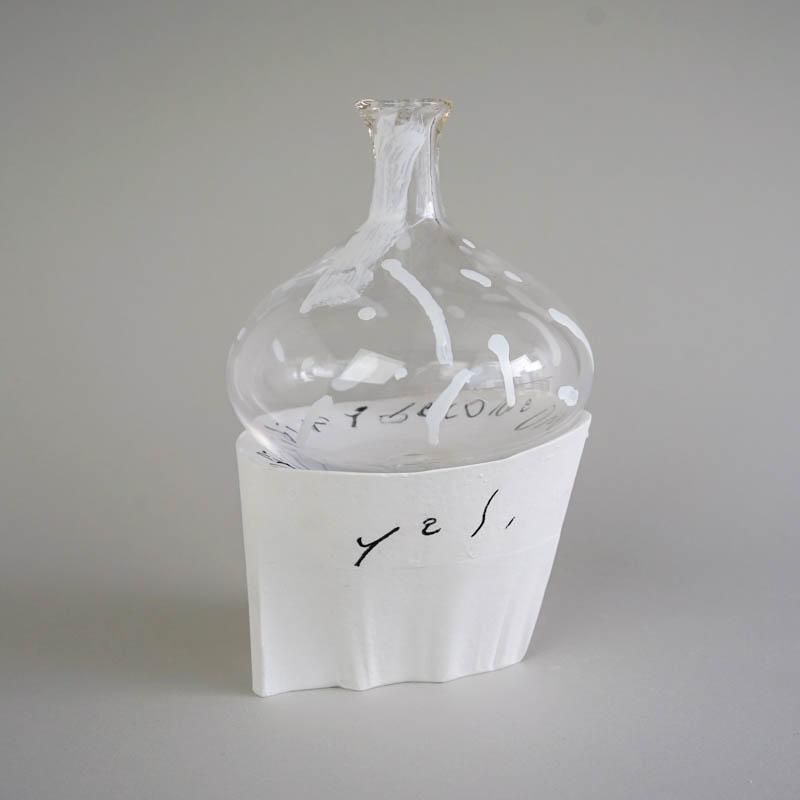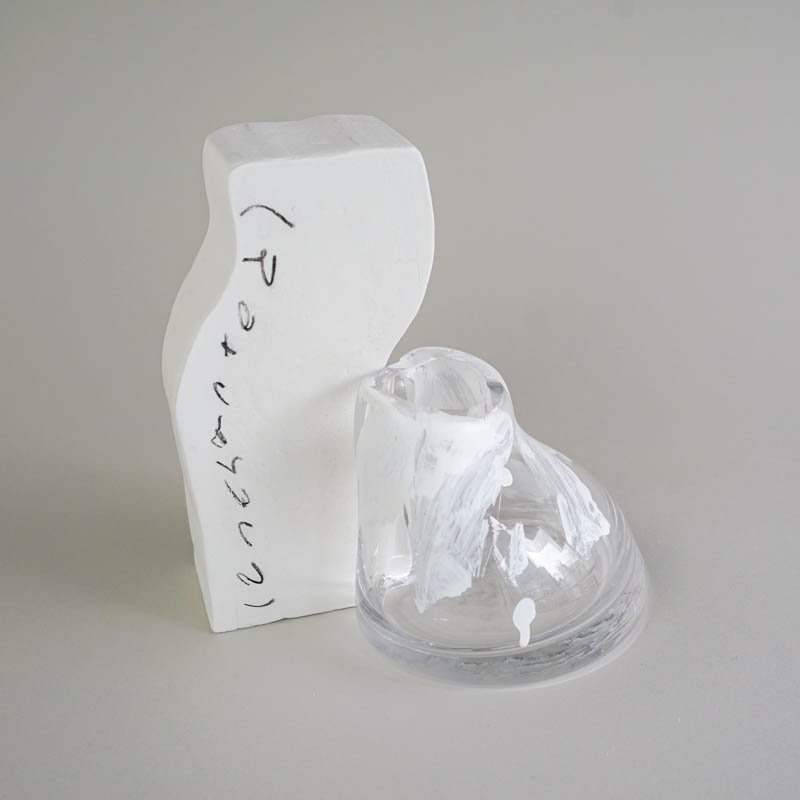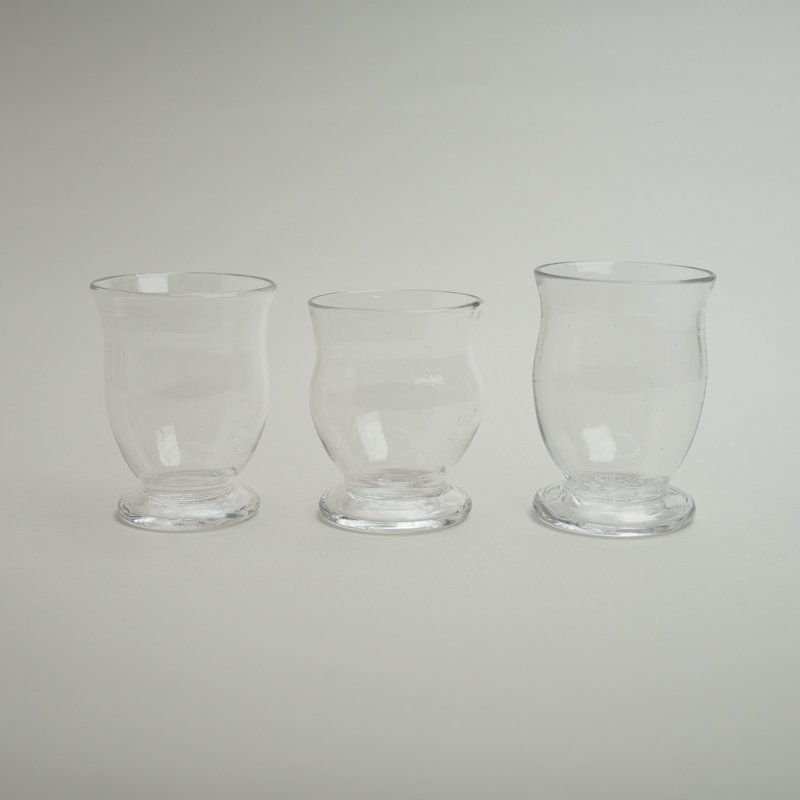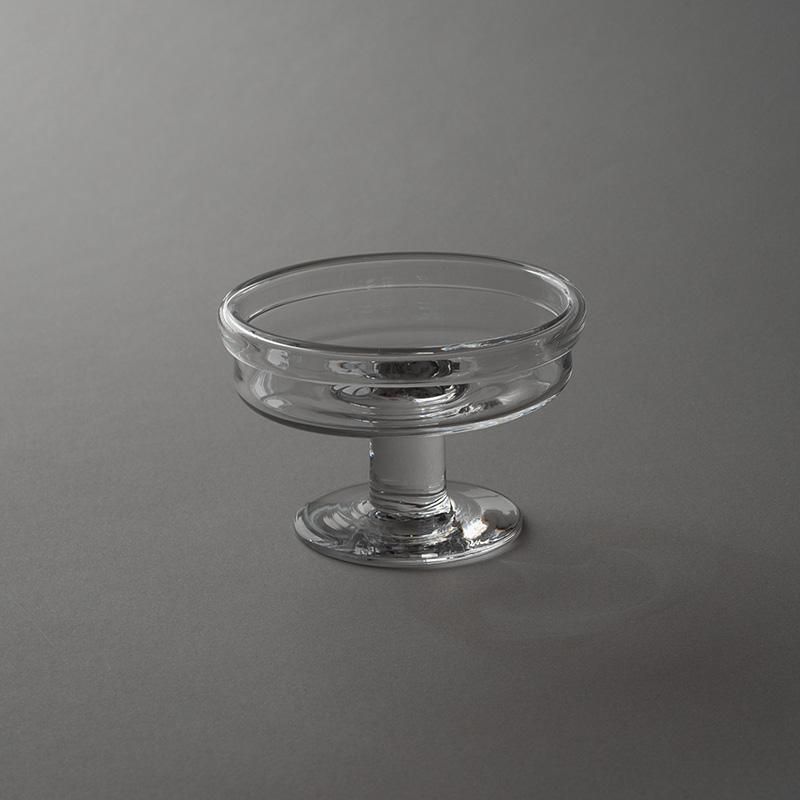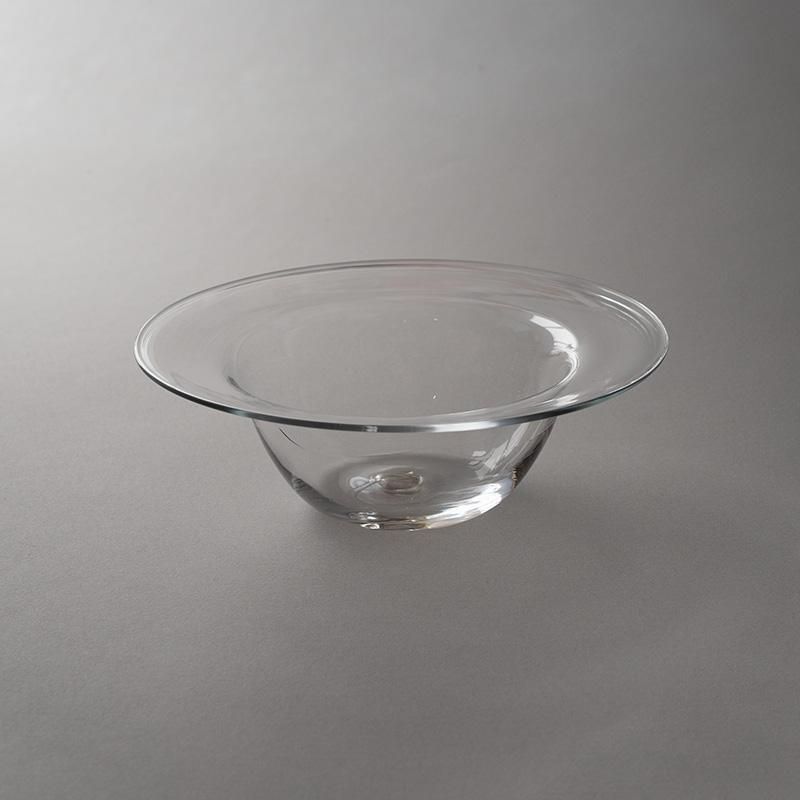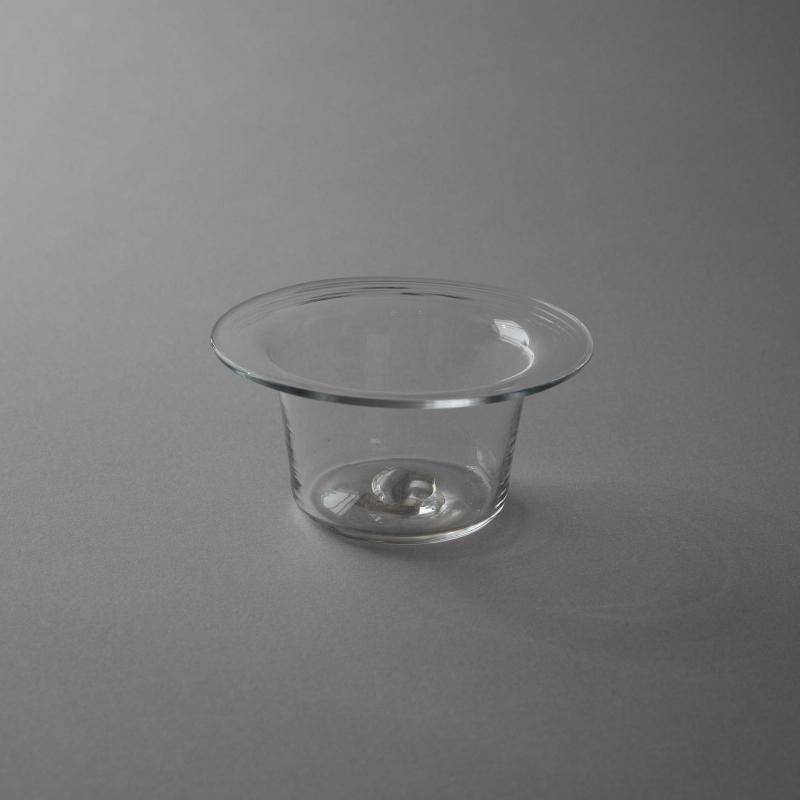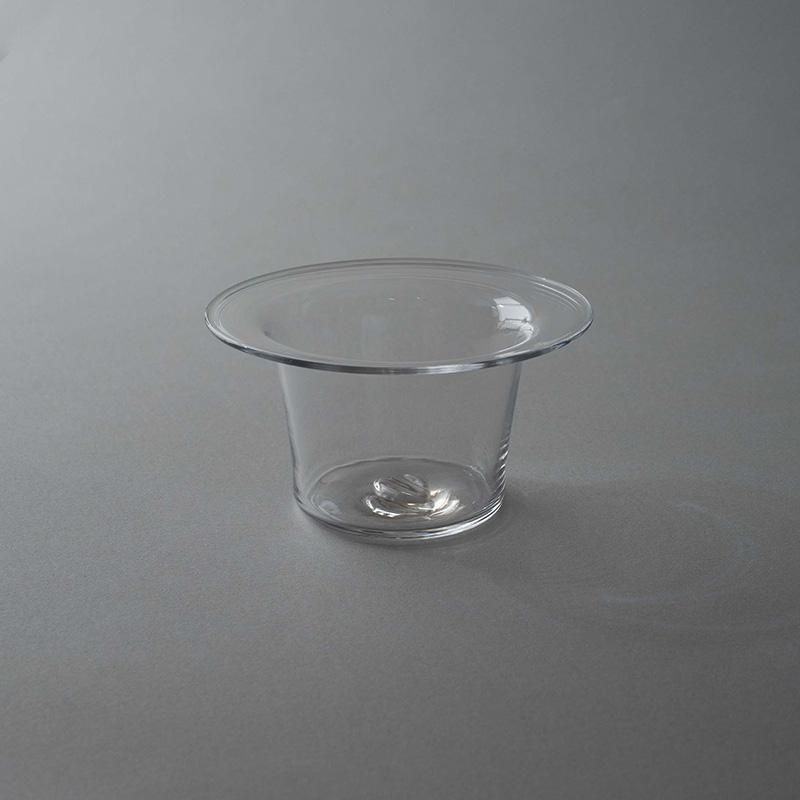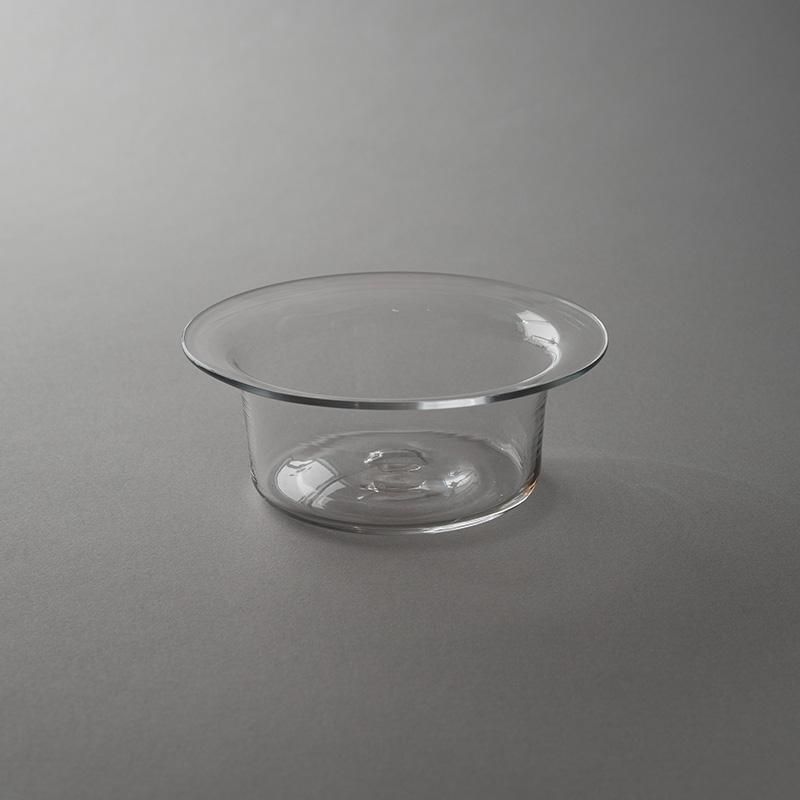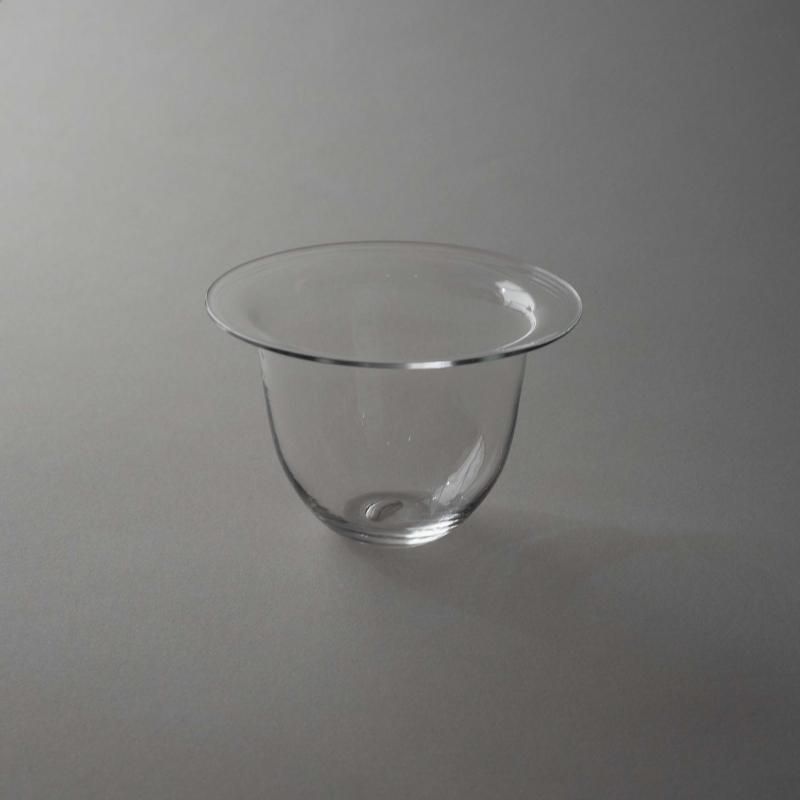練馬区の閑静な住宅街の中に突如あらわれる緑の鬱蒼とした区画、そこにイナバが活動する硝子工房がある。風致地区と呼ばれるこの一帯は、昭和初期に自然景観を維持するために建坪率等が厳しく定められた地域で、ところどころにその面影が見受けられる。200坪はある敷地の中、原生林も息づく中庭のアプローチを超えた先に硝子工房が現れる。もともと芸術家になるつもりはなく、素材に興味があったというイナバは、美大に進み、鉄や蝋、硝子など様々な素材に触れられるという理由から、彫刻を専攻する。その中で、隣の学部の学生がたまたまやっていた吹きガラスに興味を持ち、大学卒業後にこの硝子工房の門を叩いたのが始まりだ。
Tomoko Inaba イナバトモコ
自分を無にして、つくるを追求する

森の中の工房
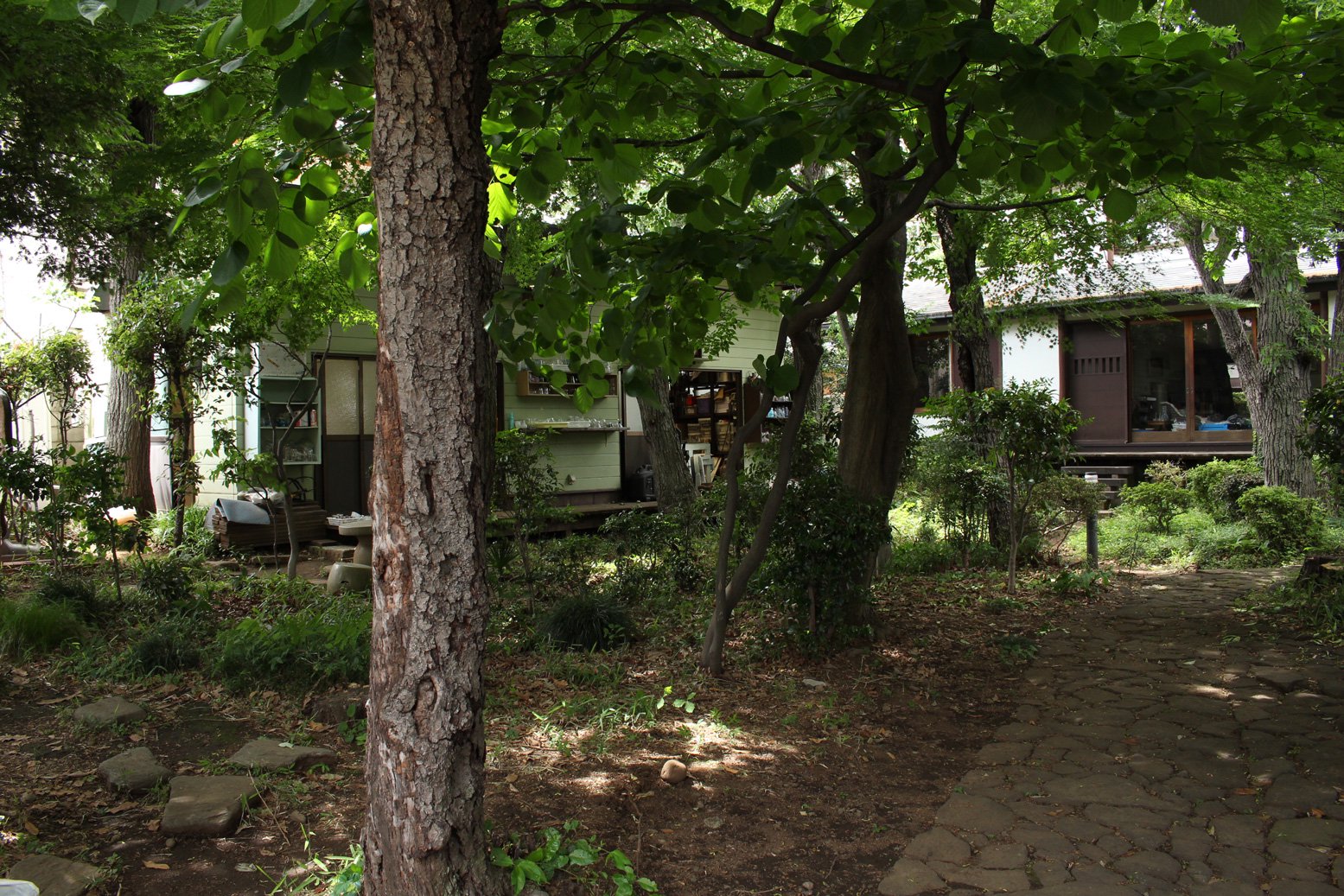
シンプルさの中にある強さ
イナバの作品は一言でいえばシンプル。オーソドックスな形に、色も使わない。昭和や大正時代の工業製品が好きで、インスピレーションの源にしていると語る彼女。確かに彼女の作品は、無駄のないミニマルな佇まいながら、古い工業製品が持つ、どこか人の手作業が生む不完全さが感じられる。派手な個性も主張もないが、一度手にとれば、他と似ているようでその違いは明らか。そして気づけば永く、いつでも使っている存在。シンプルなものほど、作り手も多く差別化が難しい世界だが、そんな中でもイナバの作品には唯一無二の魅力がある。フォルム、色、薄さ、どれもが絶妙なバランスで彼女の作品のオリジナリティとなり、スタンダードと呼ばれるモノが持つ“強さ”を宿らせている。
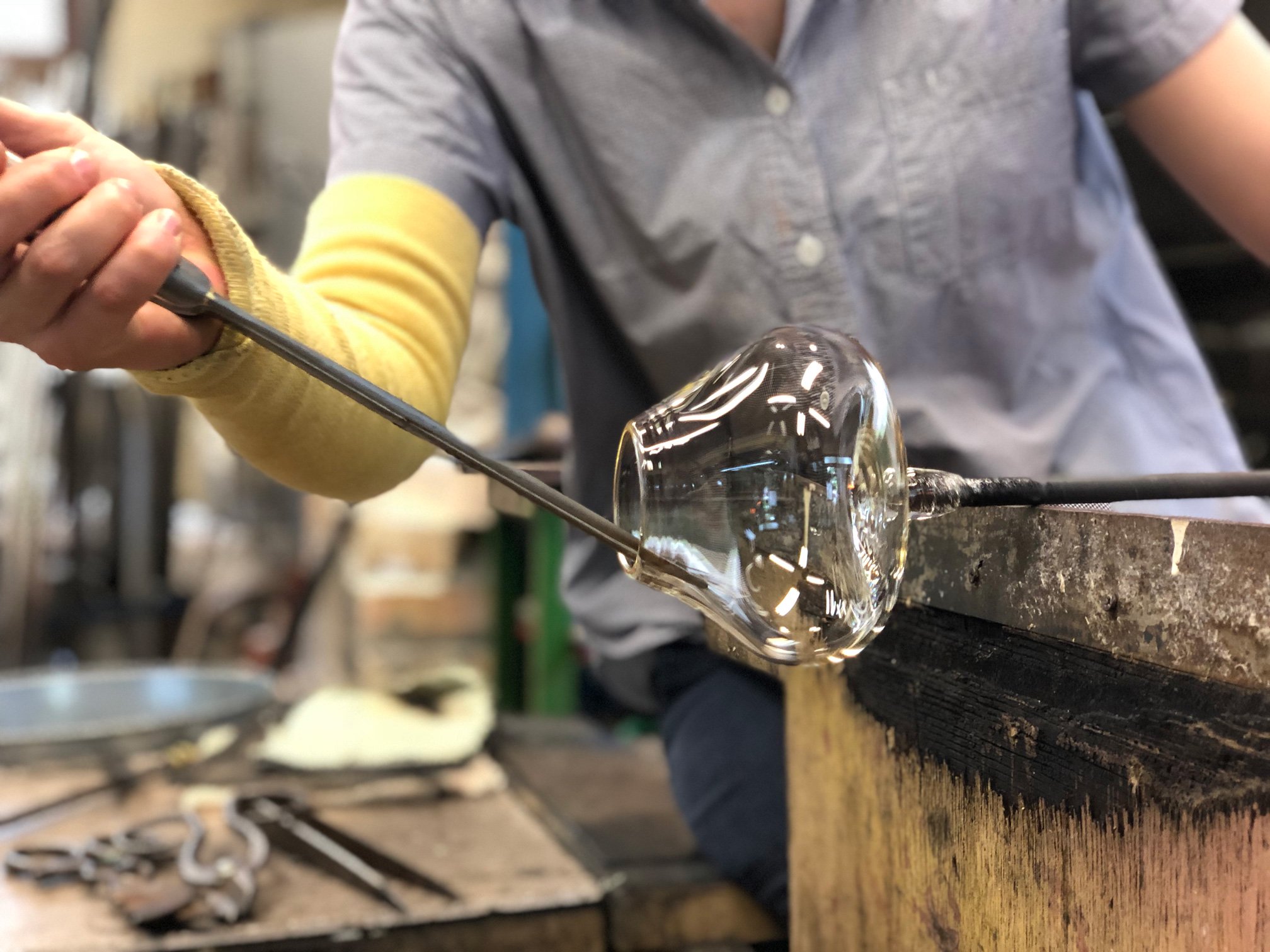
個性を出さないこと
「作品のコンセプトはなんですか?」この質問を投げかけることが、イナバトモコほど意味をなさないと思ったことはない。敢えて作品をつくるうえで大事にしていることはと尋ねると、「個性を出さないこと」、そう彼女は答えてくれた。もともと自分を表現するのが苦手と語る彼女は、制作に対しての姿勢もある意味冷静で常に客観的。ガラスの世界は奥深く、その技法や技術レベルを探求しようとすれば切りがない。そうしたガラス制作において、イナバは敢えて、「ガラスの世界に入り込まないようにしている」。技術や自分の表現を追い求めるあまり、本当につくりたいものや、生活に寄り添うものを見失うこともある。「素人の感覚を持っていたい」という言葉に、作家ではない、生活者としての視点から、自分のつくるべきもの、自分のあるべき姿を見つめているように感じた。
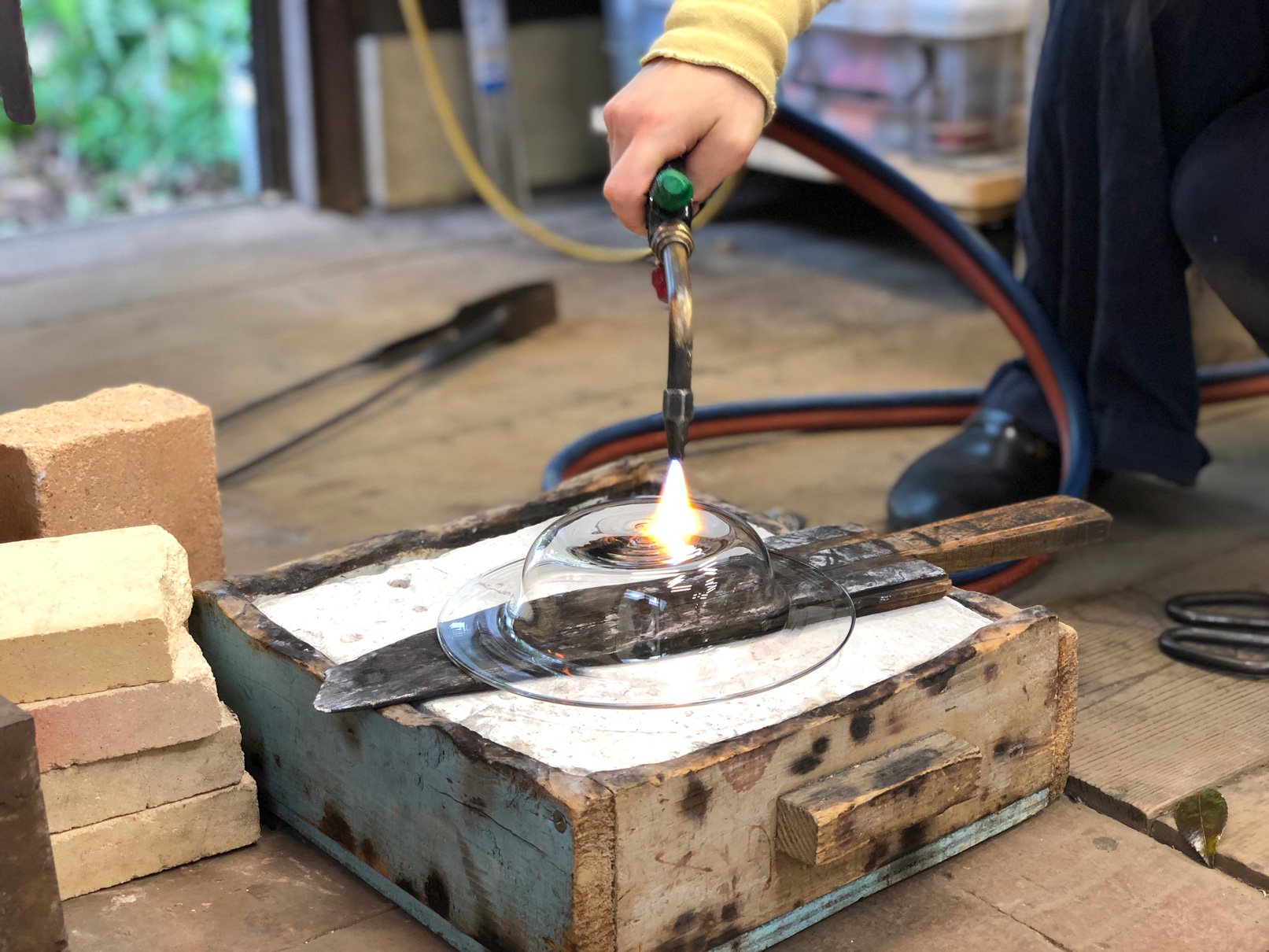
大阪生まれ
美術大学で彫刻を学ぶ
卒業後、ギャラリーでの仕事の傍ら、2013年から吹きガラスを始める
2017 にわのわ出展、初個展(SyuRo)
以降、個展、グループ展、クラフトフェア出展多数
To make oneself disappear and pursue the art of making

A workshop in the forest
The glass workshop where Inaba works is situated in a dense green area that suddenly appears from amidst a quiet residential district in Tokyo’s Nerima ward. The entire area is designated as a landscape zone where the building ratio and the like had been strictly prescribed in the early Showa period to maintain the natural landscape, the traces of which efforts can still be observed today. The glass workshop stands on a spacious site of over 660 square meters, beyond the courtyard approach surrounded by an old-growth forest. Inaba, with no initial intentions to become an artist yet expressing an interest in materials, enrolled at an art university where she studied sculpture that enabled her to engage with various materials such as metal, wax, and glass. She eventually came to be interested in blown-glass that students in the neighboring department had been studying, and upon graduating began her apprenticeship at the glass workshop where she has since continued to develop her practice.

Strength that lies within simplicity
Inaba’s works can be described as being simple, taking on orthodox forms without any use of color. She expresses a fondness for industrial products of the Showa and Taisho periods, citing them as a source of inspiration. Indeed, while her works are minimalist in appearance, they harbor a certain incompleteness attributed to handmade craftsmanship as can be observed in old industrial products. Her works do not convey any flamboyant personality or character, and although they may look similar to others, once one takes them in their hands, it is possible to clearly distinguish the difference. They soon become objects that are cherished and used everyday over a long period of time. The simpler the object, the more creators there are, and the more difficult it is to differentiate one’s work from others. Even within such context however, Inaba’s works harbor a unique and distinct charm. Their form, color, and thinness come together to create an exquisite balance that in turn become the originality of her work, embodying an air of “strength” that is only natural to standard classics.

To conceal one’s personality
It is meaningless to question Tomoko Inaba as to what concepts exist within her works. When asked if there was anything she considers particularly important in creating work, she had responded, “to conceal one’s personality.” As someone who finds difficulty in expressing herself to begin with, her attitude to production is in some ways calm and always objective. There is much depth to the art of glass making, and there is no end to the pursuit of technique and level of skill that is involved. Within such context, Inaba takes care “not to venture into and engross oneself in the world of glass making.” At times one can become too caught up with pursuing techniques and personal means of expression, that they lose sight of what they really wish to create, or what lies close to everyday life. From Inaba’s desire to “maintain a fresh and amateuristic sensitivity,” once could sense the figure of an individual whom confronts her own true existence, and engages in creating things not from the perspective of an artist, but from that of an ordinary consumer.

Born in Osaka
Studied sculpture at art university
After graduating, began making works with hand-blown glass from 2013 while working at a gallery
Presented a solo exhibition (SyuRo) at Niwanowa in 2017, and ever since has been involved in numerous solo exhibitions, group exhibitions, and art fairs.

